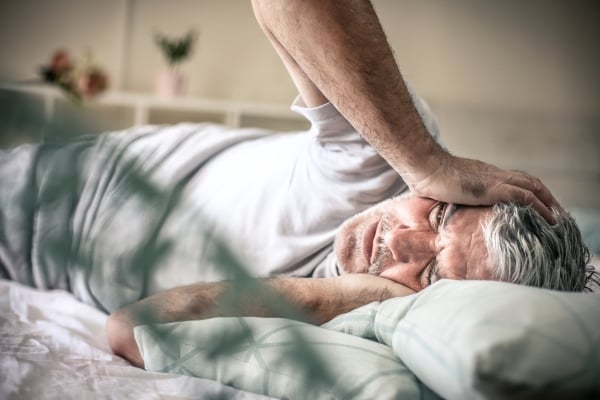

Many men over the age of 50 experience sleepless nights due to the frequent need to urinate. Does this sound familiar? Are you disrupting your partner’s sleep with regular trips to the bathroom? You may be suffering from BPH (benign prostatic hyperplasia), often known as enlarged prostate, and what better time to start the conversation than Movember.
Movember is a charitable campaign held annually in November to bring difficult conversations about men’s health and wellness to the forefront. While the charity focused initially on prostate cancer, it has expanded its mission in recent years to include awareness-building efforts around a number of men’s health issues.

BPH, a non-cancerous enlargement of the prostate that occurs as men age, may be mistaken as an untreatable part of the aging process, rather than a condition that can be treated with a visit to the urologist’s office. Due to lack of awareness about the signs and symptoms of BPH, many men are left undiagnosed. The most common symptoms associated with enlarged prostate are frequent urination and the inability to empty the bladder.1 If left untreated, an enlarged prostate may lead to permanent bladder damage.2


While BPH is a benign condition and unrelated to prostate cancer, it can greatly affect a man's quality of life. A recent survey found that 82% of men wake up at least one time each night to urinate on a regular basis. The study further identified that symptoms of enlarged prostate also impact men’s partners. Of the women surveyed, 64% reported that their sleep is often interrupted due to their partners’ BPH symptoms. However, enlarged prostate can impact more than just sleep.
Many couples aren’t aware that erectile dysfunction (ED) may be linked to BPH.3 While the issue often remains undiscussed, according to another recent survey, over 90 percent of men surveyed said that they would likely seek minimally invasive procedures if they carried less risk of impotence or incontinence. Like men, romance is also important to women — and medical professionals have suggested that a healthy sex life may improve life-expectancy and overall health and wellness.4

There are many treatment options available for men who suffer from BPH. Prescription medication is often a first-in-line approach recommended by urologists — as well as medical procedures. However, it is important to know the potential risks associated with the use of medication and more invasive procedures
Along with traditional treatment options, there have been many advancements in the field of urology. The UroLift® System is a proven treatment for enlarged prostate and the Prostatic Urethral Lift procedure (using the UroLift System) has been recommended by the American Urological Association. It is typically an outpatient procedure that can be performed in the doctor’s office in about an hour. Many are experiencing rapid recovery in days, not months. There is no better time than this Movember to visit www.urolift.com and find a doctor near you.
References:
*No instances of new, sustained erectile or ejaculatory dysfunction
1. Abrams, et al, Neurourology and Urodynamics 2002; Maximilian, et al. BJU Intl 2012
2. Tubaro et al. 2003 Drugs Aging
3. Lipshultz, Larry. “What’s the Link Between an Enlarged Prostate and ED?” Prostate.net, 2018, prostate.net/health-centers/erectile-dysfunction/questions-getting-help-ed/whats-link-enlarged-prostate-ed.
4. Castleman, Michael. “The Prescription for a Longer Life? More Sex.” Psychology Today, Sussex Publishers, 2015, www.psychologytoday.com/us/blog/all-about-sex/201705/the-prescription-longer-life-more-sex.
MAC01112-04 Rev A
